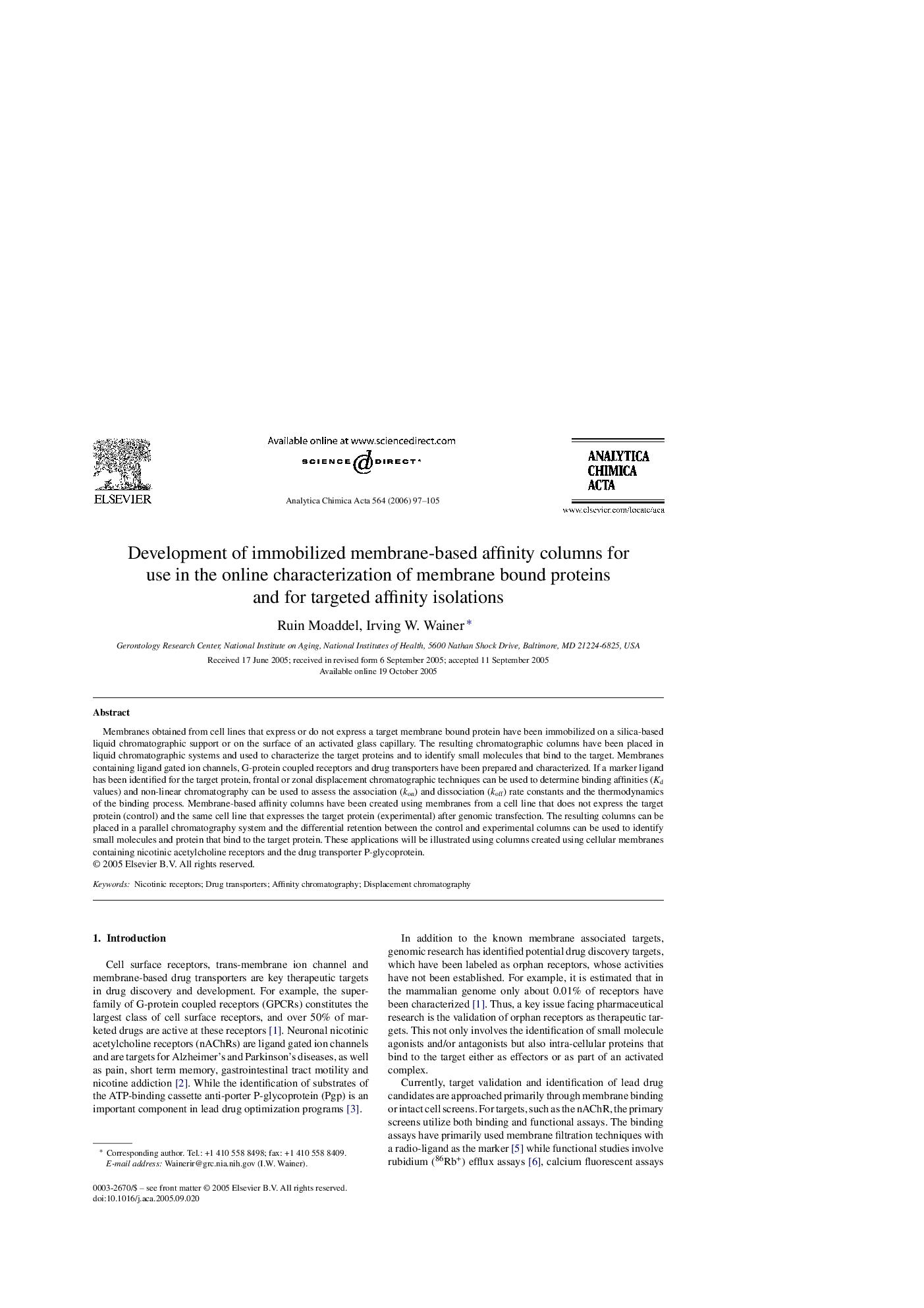| Article ID | Journal | Published Year | Pages | File Type |
|---|---|---|---|---|
| 1172027 | Analytica Chimica Acta | 2006 | 9 Pages |
Abstract
Membranes obtained from cell lines that express or do not express a target membrane bound protein have been immobilized on a silica-based liquid chromatographic support or on the surface of an activated glass capillary. The resulting chromatographic columns have been placed in liquid chromatographic systems and used to characterize the target proteins and to identify small molecules that bind to the target. Membranes containing ligand gated ion channels, G-protein coupled receptors and drug transporters have been prepared and characterized. If a marker ligand has been identified for the target protein, frontal or zonal displacement chromatographic techniques can be used to determine binding affinities (Kd values) and non-linear chromatography can be used to assess the association (kon) and dissociation (koff) rate constants and the thermodynamics of the binding process. Membrane-based affinity columns have been created using membranes from a cell line that does not express the target protein (control) and the same cell line that expresses the target protein (experimental) after genomic transfection. The resulting columns can be placed in a parallel chromatography system and the differential retention between the control and experimental columns can be used to identify small molecules and protein that bind to the target protein. These applications will be illustrated using columns created using cellular membranes containing nicotinic acetylcholine receptors and the drug transporter P-glycoprotein.
Related Topics
Physical Sciences and Engineering
Chemistry
Analytical Chemistry
Authors
Ruin Moaddel, Irving W. Wainer,
